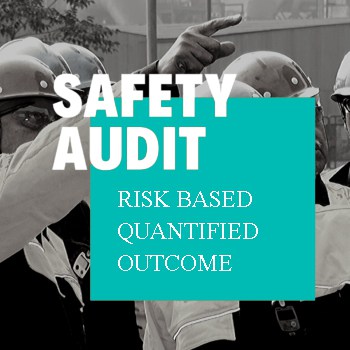documentation and determine whether their record-keeping systems are adequate or need to be more robust.
The main objective of safety audit is to carry out a systematic, critical assessment of all potential hazards involving personnel, plant, services and operational methods in order to ensure that existing Health and Safety practices fully satisfy the requirements stipulated by law or regulations and international standard. It is also mandatory to ensure that your employees feel safe working in your organization.
Why is Safety Audit important?
An Organizations conduct safety audits to comply with laws or regulations and to provide and maintain a safe workplace for everyone and verify that your employees and management are engaged in your safety programs. A safety audit identifies different levels of defect and risk in each work area of an organization. An audit’s findings can also include how an organization can remediate potential threats to employees and visitors. When the organization follows through on the findings of a safety audit, the workplace will be safer, and there will be a reduced likelihood of worker injury, illness, and death.
Depending on the requirements of the organizations, the audit can focus attention on the following aspects of a safety system –
– Safety Management systems.
– Explosion prevention, protection and emergency management.
– Work injury prevention.
– Health hazards control.
– Evaluating emergency plan if already available.
– First aid practices
– Management of health and safety
– Accidents and accident reporting
– Asbestos
– Contractors
– Display screen equipment
– Electrical safety
– Emergency lighting
– Fire and Fire prevention and emergencies
– First-aid
– Environmental protection
– Hazardous substances
– Housekeeping and cleanliness
– Information and communication
– Kitchens, catering and food safety
– Lifts and lifting equipment
– Manual handling operations
– Noise
– Occupational health
-Health and hygiene
– Personal protective equipment
– Plant rooms, machinery and equipment
– Risk assessment requirements
– Safety Policy
– Safety signs and notices
– Training
– Use of vehicles / vehicle safety
– Water services
– Welfare provision
– Working time
– Work at heights
– Workplace environment
– Accident prevention
– Identifying and correcting Regulatory Deficiencies
– Improvement of Employee Morale
– Identification and Elimination Of Safety Hazards
– Safety in storage and warehousing
– Hazardous waste treatment and disposal
Which Industries can go for Safety Audit?
Organization can go for safety audit which company construct High-rise Buildings, Hospitals, Commercial Buildings and Shopping Malls, Hotels. And it is also applicable for all kinds of industries including hazardous industries like Oil & Gas, Chemical, Iron & Steel, Mining operations, Manufacturing and many other industry sectors. And the applicable ISO Standards are ISO 45001 and ISO 14001.



